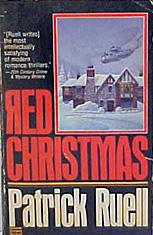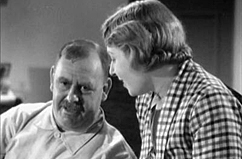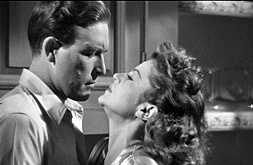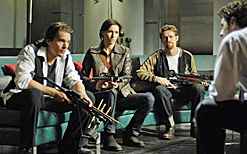Wed 25 Jan 2017
A Horror Movie Review by Jonathan Lewis: THE CURSE OF THE DOLL PEOPLE (1961).
Posted by Steve under Horror movies , Reviews[5] Comments
THE CURSE OF THE DOLL PEOPLE. Mexico, 1961. Originally released as Muñecos Infernales. Elvira Quintana, Ramón Gay, Roberto G. Rivera, QuintÃn Bulnes, Nora Veryán. Directors: Benito Alazraki and Paul Nagle.
Apparently they made two versions of this black and white Mexican horror film. The original Mexican production, entitled Muñecos Infernales (“Diabolical Dolls†is a good translation and one I think that works pretty well in describing the movie), and the made for American release, The Curse of the Doll People, which I understood to be a rather disjointed production.
So it was the former production that I recently watched, albeit with the necessary English subtitles. And I have to tell you: it’s a strange one, through and through. It’s not just that the atmosphere is at times uncannily creepy or that the soundtrack works perfectly for an early 1960s horror movie.
No. It’s also the subject matter which you’ve probably guessed by now revolves around dolls. And not just any dolls, but devilish little fiends that come to life and then proceed to murder you in your sleep with tiny little daggers. That is what makes Muñecos Infernales worth watching. It actually successfully pulls off the whole “evil dolls come to life†without once slipping into self-parody or light comedy.
But where did these dolls come from and what do they want? Well, there’s a backstory to that. A group of wealthy Mexican professional friends reveal to another friend, a female physician named Karina (Elvira Quintana), that they went on a trip to Haiti and while there, violated the sanctity of a voodoo temple and stole an ancient relic.
Why Karina? Well, she’s familiar with archaeology and the occult, her father being an archaeologist who took her to far-flung places in her youth. (Marion Ravenwood comes to mind.) When members of the traveling party start dying in mysterious ways, it doesn’t take long for Karina to surmise that they were cursed. Her fiancé, Dr. Armando Valdés (Ramón Gay) thinks all this superstition is hokum.
That is, until he learns that his friends have indeed been killed for their transgressions and that the murderers were devil dolls. If that sounds like a lot to take in for one feature, that’s because it is. There’s voodoo, a sorcerer, devil dolls, and last but not least, a zombie.
But the whole thing’s oddly captivating nonetheless. Not a great horror film, but it’s certainly on par with some of the better British and Italian films from the same era.



